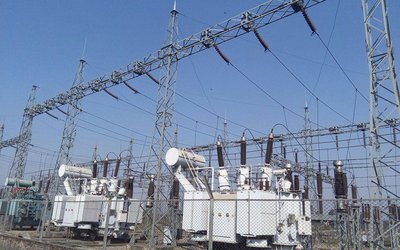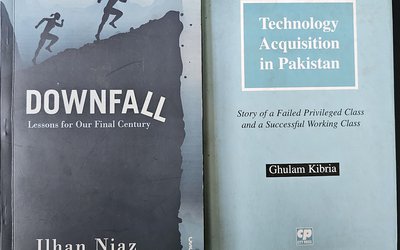Among the many problems facing Nepal today, taking the peace process to a meaningful conclusion is the most important one. Management of rebel combatants is always a difficult side of any post-conflict peace building. Integration and Rehabilitation (I & R) of the Maoist Army Combatants (MACs) is at the root of the problem in Nepal too. At what stage is the I & R debate in Nepal? What are the real issues and difficulties? What is the way forward?
The I & R Discourse: Initially the I & R discourse centered around Disarmament, Demobilization and Reintegration (DDR) of the MACs stressed by the non-Maoists and Security Sector Reform (SSR) linking it with "Democratization of the Nepal Army" (NA) by the Maoists. Both are envisaged in the Comprehensive Peace Agreement (CPA).
The DDR/SSR mantras developed in the context of conflicts in Africa and changes in Eastern Europe do not fully address the dilemmas of the unique Nepali peace process. So, numbers, norms, modalities and ranks emerged as the four core issues of integration. Prioritization and sequencing of along with resources and their prudent use were also identified as the key issues for leaders to come to an understanding and move the peace process forward. (Presented many times in many places these ideas were later published-see Integration and rehabilitation, Shambhu Ram Simkhada, the Kathmandu Post, 19 May, 2010).
Integration: Since then discussions on integration have revolved around these core issues of:
• Numbers: 19602 MACs were verified by the United Nations Mission in Nepal (UNMIN) and registered in the seven main cantonments and 21 satellite camps. There is no agreement on how many are to be integrated into which security forces but the numbers issue could be settled within the 4 to 6,000 range.
• Norms: Clause 4.1.3 of the Agreement on Monitoring of the Management of Arms and Armies (AMMAA) of 8 December, 2006, complimentary to the CPA signed on 21 November, both parts of the Interim Constitution, stipulates “Only those Maoist Army Combatants who have been properly registered at cantonment sites will be eligible for possible integration into the security forces fulfilling the standard norms”. Disagreement on norms revolves around the UCPNM demand of new integration norms while the others insist on the established standard norms of recruitment. Consensus around flexibility on education, age and marital status is slowly emerging.
• Modality: The debate on modality has been dominated by insistence on individual qualification by the non-Maoists and unit (group) integration demand of the Maoists. Individual qualification based on agreed norms, training and deployment in units could bridge the difference.
• Rank: Rank determination or harmonization is always complex. This is made even more so by the high officer-soldier ratio of the MACs compared to the NA which follows the standard international practice. The UCPNM decision to withdraw members of the politburo and central committee from I & R could make this little easier.
• Bridging Training: Many unresolved issues could be cleared during the bridging course through a dual process of training and evaluation. But such decisions will need political understanding.
• NA Directorate: Towards the fag end of Madhav Kumar Nepal’s Prime Ministership a proposal for integration of an agreed number of MACs in a separate Directorate of the NA became public. The directorate would be composed of 35% from the NA, 35% from the MACs and 15% each from the Armed Police Force (APF) and the Nepal Police (NP). It would be headed by a Major General of the NA. Its role focuses on disaster relief, development work, forest and industrial security.
This proposal credited to the NA, highlights its readiness to assist the political leadership in taking the peace process forward dispelling any confusion that NA is opposed to the integration of the MACs. Acceptance of UNMIN record of date of entry could also facilitate rank determination. While these are positive sides, some people argue that such a proposal should have come from the Special Committee (SC), the body with both political and constitutional mandate and it’s Technical Committee (TC), now Secretariat rather than the NA. Others see the separate directorate contrary to the CPA saying such an arrangement allows the MACs retain their separate identity within the NA, a view UCPNM leaders insist openly and others oppose vehemently.
On the core issues of numbers, norms, modality and ranks there are continuing disagreements with no clarity on leadership, functions and composition. How will the existing disaster relief and forest security units of the NA relate to the new directorate? Is there a need for the APF and NP also to be included in the model? So, many issues remain unclear. If there is political agreement on 5,000 for example 3,500 could be integrated into the NA and the remaining in the APF and NP.
Voluntary Exit: Some MACs are expected to leave the camps voluntarily. Agreement on the terms at the SC and exit of a number of MACs could send a good signal, reduce the time and resources needed for eventual I & R.
Rehabilitation: The following rehabilitation options could be offered:
• Formal and non-formal Education
• Vocational training and skills enhancement for employment
• Entrepreneurship development
• Foreign employment
• Special packages for pregnant women, lactating mothers, disabled and wounded MACs
Many rehabilitation packages are under discussion. But pre-occupation with integration has overshadowed focus on rehabilitation with no agreement on amounts and methods of disbursement.
Institutional Arrangement: In the present scheme of things, MACs opting for integration go to the respective security forces. Rehabilitation will be taken care of by the Ministry of Peace and Reconstruction (MOPR). But, who will oversee the bridging training and evaluation? With the fiasco of the verified minors and late recruits discharged from the cantonments, experts feel the need of better institutional arrangement for effective implementation of the rehab of the MACs. In this context three options are suggested: strengthen the concerned division of the MOPR, establish an independent Rehabilitation Board or create a task force within the SC Secretariat. Whichever option is chosen, it should be inclusive with ability to resolve problems at the political level and outreach to implement programs and monitor progress in the field.
Resources: Management, I & R is complex and costly. The state already spends a lot. Without agreement more scarce resources will have to be spent as the prospect of renewed conflict is even more painful. Nepal is fortunate that the international community is willing to help. An ambassador of a friendly country recently complained "I have …million…I can spend on I & R but you do not seem to be able to use it". If we can agree on a viable plan resources are available. However we should be prepared to implement parts of the plan ourselves and meet some donor concerns if we want their help.
I & R plans should be consistent with the prevailing country situation. To reorient the MACs from using bullets to reading books and earning bread rehabilitation packages should be more attractive than cash grants for voluntary exit. Packages should be fair to the MACs but reasonable for others to be able to defend. Most important, packages should not provide
incentives for the MACs to return to violence or others to take up arms. Based on these principles, agreement in the SC on voluntary exit and rehab packages can move the process forward.
• In clause 2.2.4 “The combatants of the Maoist Army and any weapons within or outside the cantonments shall be under the supervision, control and direction of the SC until the task of I & R is completed”
• The composition of the SC was changed to make it inclusive of “representatives of the major political parties having representation in the CA”.
• The provision of the TC was added
• A new urgency was added by declaring “The state shall not bear any responsibility for the verified combatants who have not been integrated and rehabilitated after six months”.
Five years on, the state spends a lot while the MACs suffer the indignities of life in temporary camps and uncertain future. Handover of cantonments and keys of the weapons containers make headlines but there is no clarity on the command and reporting. Thank God nothing untoward has happened after UNMIN left and SC-Secretariat started the monitoring work. But the SC-S has been unable to fulfill its core TOR, ascertain the number of MACs now in the camps, verify the records left by UNMIN and prepare profiles for I & R. Discussion on weapons has not even started. Politicians expect input from security experts to move the process forward while the secretariat leadership, happy with its new realm, waits for instructions. Any wonder, deadlock on the core issues identified so long ago continues.
Conclusions: Management, I & R of the MACs is the indicator of conflict transformation from violent to peaceful competition for power, foundation of all agreements and the goal of the peace process. That is what makes the resolution of this problem so crucial. There is no definite pattern of sequencing; which comes first, numbers or norms, which is more important I or R? These concepts can be used to move the process forward with flexibility or block progress with rigid positions.
Should integration take place into the security forces or in the much talked about NA directorate? There is no agreement on the core issues. Rehabilitation is in the back burner. Meanwhile the UCPNM leadership wants to go ahead with regrouping amidst objections in their own party and doubts from others on how re-grouping can start without agreement in the SC on some fundamentals of I & R.
Why is there so much confusion? Wars may be fought by and among armies but war and peace are essentially political decisions. For sustainable peace in war-torn societies, mindsets need to change first from war to peace, bullets to books and bread, rebellion to reconciliation/reconstruction/rehabilitation. Without this mental transformation, debate on I & R can be murky, discussions on numbers, norms, modality and rank confusing. It takes leadership of wisdom and courage to lead society out of the quagmire of confusion, chaos and conflict.
Dr. Simkhada, sambins@gmail.com, is a member of the SC- Secretariat
- TANAHU HYDROPOWER PROEJCT: A Significant Achievement
- Apr 15, 2024
- AMBASSADOR HANAN GODAR: Sharing Pain With A Nepali Family
- Mar 30, 2024
- VISIT OF KfW AND EIB TO NEPAL : Mission Matters
- Mar 25, 2024
- NEPAL BRITAIN SOCIETY: Pratima Pande's Leadership
- Mar 24, 2024
- NEPAL ARMY DAY: Time To Recall Glory
- Mar 15, 2024
















